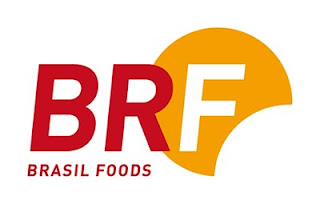
Brasil Foods is a new brand, it was created in 2009 after a merger between two food giants: Sadia and Perdigão. When approved by the Brazilian authorities, it will be the third biggest food exporter of Brazil.
It's main business is the production of meat related products, pizzas, pasta, margarines, soups, deserts and microwave meals. Separately the two companies had a large market share in certain categories. Sadia for example claims to be a market leader in all segments in which it is present. The two companies together will be very dominant in certain categories on the Brazilian market:
- Pasta meals (micro wave meals): 88%
- Frozen meats: 70%
- Refrigerated meat: 59%
- Margarine: 65%

Brand architecture
Brasil Foods has 22 brands and about 3000 different products worldwide. Both Sadia and Pedigrão have complex product lines. Streamlining all the brands into one clear brand architecture is one of the challenges the company faces.
Brasil Foods works as the corporate brand. Until the merger is complete, all the products on the market will stay under their current brand name. In Brazil this means that the brands Sadia and Pedigrão will continue to exist next to each other in several categories. Later it will be interesting to see some changes. A few possibilities come to mind:
- Brasil Foods keeps the two brands operating next to each other. Owning two seemingly different brands in a category might be an effective strategy to cover a large part of the market.
- The individual positioning of each brand is reviewed and instead of competing with each other, each brand is positioned to serve a different segment. One brand could be the premium while the other would be the "normal" product.
- An overhaul of the whole brand architecture were brands that are double or don't fit are cut.
One product category that will definitely be reviewed is margarines. Brasil Foods has eight brands available for the consumer: Qualy and Deline by Sadia; Claybom, Delicata, Doriana and Becel by Perdigão; Borella and Turma da Mônica through a joint-venture.
Executives from the company and industry experts have mentioned the similarities which Inbev faced after the merger between Ambev and Interbrew. No doubt it will be very interesting to follow up to see what steps were taken and how effective they were.
Follow this link to discover more Brands of Brazil.

No comments:
Post a Comment